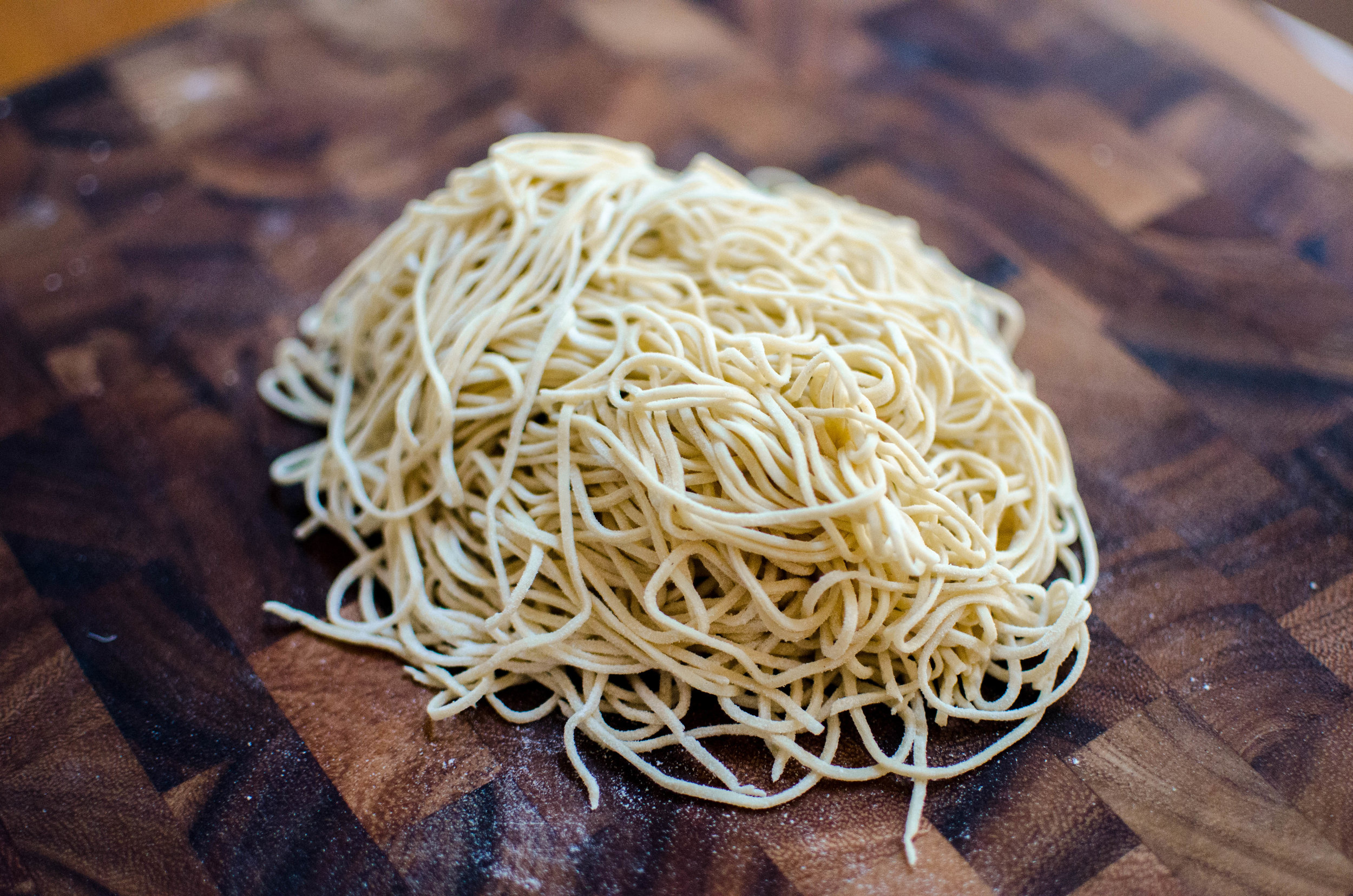Ramen vs. Udon: Exploring the Differences and Similarities
Ramen and udon are two popular types of Japanese noodles that have gained international recognition. Each noodle variety has its unique characteristics, flavors, and uses. In this article, we will delve into the world of ramen and udon, highlighting their differences and similarities. Whether you're a fan of one or both of these delicious dishes, understanding their distinctions will enhance your culinary knowledge and appreciation.
I. Origin and History:
1. Ramen: Ramen originated in China but has become a beloved staple of Japanese cuisine. Introduced to Japan in the late 19th century, ramen has evolved over time, incorporating various regional and international influences. Today, it is a globally recognized dish, renowned for its flavorful broth and toppings.

Tonkotsu Ramen
2. Udon: Udon, on the other hand, is a type of thick wheat noodle that has its roots in Japan. Its history dates back to the Nara period (710-794 AD), and it has been a significant part of Japanese culinary culture ever since. Udon noodles are versatile and commonly used in hot soups, stir-fries, and cold noodle dishes.

Udon with Chicken and Mushrooms
II. Noodle Characteristics:
1. Ramen: Ramen noodles are thin and springy, typically made with wheat flour, salt, and water. They have a firm texture and a slightly chewy consistency when cooked. Ramen noodles are available in different thicknesses and lengths, allowing for a range of textures and cooking times.

Ramen Noodles
2. Udon: Udon noodles, on the contrary, are thick and chewy, crafted from wheat flour, water, and sometimes salt. These fat, white noodles have a soft yet springy texture that sets them apart from other types of noodles. Their thickness allows them to absorb flavors well, making them ideal for hearty broths and sauces.

Udon Noodles
III. Broth Varieties:
1. Ramen: Ramen is renowned for its diverse and flavorful broths. The broth serves as the foundation of a great ramen dish and is typically made from pork, chicken, seafood, or vegetables. Popular ramen broth styles include shoyu (soy sauce-based), miso (fermented soybean paste-based), tonkotsu (pork bone-based), and shio (salt-based).
2. Udon: Udon noodles are often served with a lighter broth, allowing the noodles to shine. The broth can be made from dashi (a Japanese soup stock), soy sauce, mirin (a sweet rice wine), or a combination of these. The emphasis is on simplicity and enhancing the natural flavors of the ingredients.
IV. Toppings and Accompaniments:
1. Ramen: Ramen bowls are typically adorned with an array of toppings that add depth and complexity to the dish. These can include chashu (sliced or braised pork), marinated soft-boiled eggs, nori (seaweed), menma (fermented bamboo shoots), green onions, and bean sprouts. Each topping contributes to the overall flavor profile of the ramen.

Ramen Toppings
2. Udon: Udon noodles are often garnished with simple yet complementary toppings. Common additions include tempura (battered and deep-fried vegetables or seafood), green onions, grated daikon radish, or a sprinkle of shichimi togarashi (Japanese seven-spice blend). The toppings aim to enhance the udon's flavors without overpowering them.

Vegan Udon Toppings
V. Serving Styles:
1. Ramen: Ramen is typically served in a deep bowl filled with noodles, broth, and toppings. The dish is meant to be enjoyed while hot, and it is customary to slurp the noodles to show appreciation for the meal. Different regions in Japan have their variations of ramen, each with its unique style and preparation methods.
2. Udon: Udon can be enjoyed in various ways, depending on personal preference and the dish being served. It can be presented in a hot soup with toppings, served cold with a dipping sauce (zaru udon), or even stir-fried (yaki udon). Udon dishes are often accompanied by condiments like grated ginger, soy sauce, or chili oil for added flavor.
VI. Conclusion:
While both ramen and udon are delectable Japanese noodle dishes, they differ significantly in their origins, noodle characteristics, broths, toppings, and serving styles. Ramen tends to have a thinner noodle and a more diverse range of broths and toppings, while udon boasts thick and chewy noodles with a focus on simplicity.
Exploring the distinctions between these two dishes allows for a greater appreciation of their unique qualities and the rich culinary heritage of Japan. Whether you're a ramen enthusiast or an udon aficionado, both noodles offer a delightful gastronomic experience that should be savored and enjoyed.